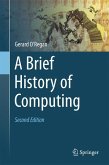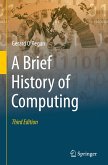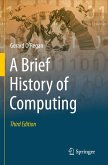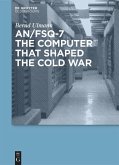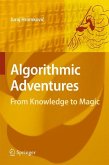This text explores how intellectual developments in logic and mathematics were gradually matched by technical solutions in mechanics and electronics and how the resulting machines found application in engineering, science and business.
The Heinz Nixdorf Museum Forum (HNF) is the world's largest c- puter museum and is dedicated to portraying the past, present and future of information technology. In the "Year of Informatics 2006" the HNF was particularly keen to examine the history of this still quite young discipline. The short-lived nature of information technologies means that individuals, inventions, devices, institutes and companies"age" more rapidly than in many other specialties. And in the nature of things the group of computer pioneers from the early days is growing smaller all the time. To supplement a planned new exhibit on "Software and Inform- ics" at the HNF, the idea arose of recording the history of informatics in an accompanying publication. Mysearchforsuitablesourcesandauthorsveryquickly cameupwith the right answer, the very rst name in Germany: Friedrich L. Bauer, Professor Emeritus of Mathematics at the TU in Munich, one of the - thers of informatics in Germany and for decades the indefatigable author of the"Historical Notes" column of the journal Informatik Spektrum. Friedrich L. Bauer was already the author of two works on the history of informatics, published in different decades and in different books. Both of them are notable for their knowledgeable, extremely comp- hensive and yet compact style. My obvious course was to motivate this author to amalgamate, supplement and illustrate his previous work.
The Heinz Nixdorf Museum Forum (HNF) is the world's largest c- puter museum and is dedicated to portraying the past, present and future of information technology. In the "Year of Informatics 2006" the HNF was particularly keen to examine the history of this still quite young discipline. The short-lived nature of information technologies means that individuals, inventions, devices, institutes and companies"age" more rapidly than in many other specialties. And in the nature of things the group of computer pioneers from the early days is growing smaller all the time. To supplement a planned new exhibit on "Software and Inform- ics" at the HNF, the idea arose of recording the history of informatics in an accompanying publication. Mysearchforsuitablesourcesandauthorsveryquickly cameupwith the right answer, the very rst name in Germany: Friedrich L. Bauer, Professor Emeritus of Mathematics at the TU in Munich, one of the - thers of informatics in Germany and for decades the indefatigable author of the"Historical Notes" column of the journal Informatik Spektrum. Friedrich L. Bauer was already the author of two works on the history of informatics, published in different decades and in different books. Both of them are notable for their knowledgeable, extremely comp- hensive and yet compact style. My obvious course was to motivate this author to amalgamate, supplement and illustrate his previous work.
From the reviews:
"I read this book with great interest. It contains information about the history of computer science which is not normally available in such concise form, and in a style suitable for the broader public." (Niklaus Wirth, ETH Zürich)
"The computing and historical communities are very fortunate to have this perspective on the origins of the computing field from one of the great minds from the beginning of the modern computing era." (William Aspray, University of Texas at Austin)
"This treatment of the history of computing follows the historical path of computing as it originated in mathematics and logic and progressed into machine design and programming languages. ... Any individual involved in computing will want to complete this easy read. ... The numerous pictures and figures are appealing and draw the reader along from page to page. The book ends with a 'Selected Readings' section for readers who want a more detailed explorationof this rich history. I recommend this book." (Brad Reid, ACM Computing Reviews, November, 2010)
"I read this book with great interest. It contains information about the history of computer science which is not normally available in such concise form, and in a style suitable for the broader public." (Niklaus Wirth, ETH Zürich)
"The computing and historical communities are very fortunate to have this perspective on the origins of the computing field from one of the great minds from the beginning of the modern computing era." (William Aspray, University of Texas at Austin)
"This treatment of the history of computing follows the historical path of computing as it originated in mathematics and logic and progressed into machine design and programming languages. ... Any individual involved in computing will want to complete this easy read. ... The numerous pictures and figures are appealing and draw the reader along from page to page. The book ends with a 'Selected Readings' section for readers who want a more detailed explorationof this rich history. I recommend this book." (Brad Reid, ACM Computing Reviews, November, 2010)


